
Top 10 Python IDEs For Coders: Choose The Most Suitable One¶
Millions of aspirin programmers require IDE - “Integrated Development Environment”.
Creating software applications is a difficult task.
You must create a variety of interconnected elements, including code, user interfaces, project structures, environment setups, and more. A wide variety of software tools that support several distinct design and development components have been produced as a consequence of efforts to streamline the software development process.
An integrated development environment is one such set of tools (IDE). You're probably a rather seasoned developer if you're looking at integrated development environments.
If not, a no-code or low-code development platform would probably be a better choice for you. Compared to a genuine IDE, which has simple code editors coupled with development tools like compilers, auto-completion, class exploration, and hierarchy diagrams, those tools feature more drag-and-drop components.
A software package known as an integrated development environment (IDE) gives computer programmers considerable software development capabilities. IDEs often include a debugger, build automation tools and a source code editor. The majority of contemporary IDEs offer intelligent code completion. You will learn about the top Python IDEs that are currently on the market in this post.
Table of Contents¶
- What Do You Mean By An IDE?
- Text Editor Vs. IDE
- Command Line Vs. IDE
- What Are The Features Or Characteristics Of An IDE?
- Why IDE Is Essential?
- List Of The Best Python IDEs
- IDLE
- PyCharm
- Visual Studio Code (VS Code)
- Sublime Text 3
- Atom
- Jupyter Notebook
- Spyder
- PyDev
- Thonny
- Wing
- Other Honourable Mentions (Python IDE)
- Conclusion
What Do You Mean By An IDE? ¶
An integrated development environment (IDE) allows programmers to merge the many parts of building a computer program.
IDEs boost programmer productivity by offering tools like source code editing, creating executables, and debugging.
Text editor vs. IDE¶
While IDEs offer a far wider variety of features, there are times when text editors are easier to use and more suited to the work at hand. Users who need to write a simple script or create some basic HTML will probably use a text editor rather than a complicated IDE. Syntax highlighters and search tools are still available in text editing software.
Command Line vs. IDE¶
"Command line" is a concept that most people who are moderately tech-savvy have heard of but frequently don't comprehend; in simple terms, it is the interface that comes to mind when envisioning 1980s computers. Command lines allow programmers to interface with resources and access program source code directly.
They appear somewhat antiquated, yet some users prefer this conventional, completely text-based interface. Because users are relatively oblivious to visuals and problems, programming straight into a command line (or portal if you're a Mac user) requires a lot of knowledge and documentation.
Why IDE Is Essential For Programmers? ¶
Developers use a range of tools throughout the development, creation, and testing of software. Among the most common development tools are text editors, code libraries, bug tracking software, compilers, and test platforms. A developer who does not utilize an IDE must select, deploy, integrate, and monitor these tools on his or her own.
A development environment that is integrated many of these development-related technologies into a single framework. When all utilities are shown on the same workbench, developers save time learning how to operate them individually. This is also useful for new developers who may use an IDE to learn about the tools and processes used by a team.
Most IDE features, such as intelligent code completion and automated code development, are intended to save time by reducing the need to type out whole character sequences. The integrated toolset attempts to facilitate software development by detecting and minimizing code mistakes and typos.
Other prominent IDE features help developers streamline their process and solve problems. IDEs parse code as it is written, detecting errors in real-time. Syntax highlighting, which uses visual cues to determine grammar in the text editor, is also included in most IDEs.
What Are The Fundamental Features Of IDE? ¶
Text editor:¶
Almost every IDE includes a text editor for writing and manipulating source code. Some tools may include visual elements for dragging and dropping front-end components, although the majority feature a plain interface that highlights language-specific grammar.
Debugger:¶
Debugging tools let users find and correct mistakes in source code. To evaluate functionality and performance, they frequently imitate real-world scenarios. Before the application is deployed, programmers and software engineers may generally test the various code parts and detect flaws.
Compiler:¶
A compiler is a component that converts a programming language into a form that computers can understand, such as binary code. The machine code is examined for correctness. The code is subsequently parsed and optimized by the compiler to improve performance.
Code Automation:¶
Code completion or automation tools help programmers by intelligently detecting and adding common code components. These features save developers time while developing code and limit the possibility of errors and problems.
Support For Programming Languages:¶
While several IDEs include multi-language support, most are focused on a single programming language. As a result, the first step is to choose which programming languages you will use and then modify your potential IDE selection accordingly. Examples include IDE tools for Java, Python, and Ruby.
Plugins and integrations:¶
Given the name integrated development environment, it should come as no surprise that integrations must be taken into account while evaluating IDEs. Integrating all of your other development tools into your IDE, which serves as your development gateway, will enhance development processes and productivity. Poor integrations might result in a wide range of problems and difficulties.
List Of Python IDEs: ¶
1. IDLE¶
- Integrated Development and Learning Environment, or IDLE, is Python's built-in editor.
- This IDE is appropriate for developers at the beginning level.
- The IDLE utility is compatible with Linux, Windows, and Mac OS.
- Cost: Free
The IDLE's most prominent characteristics are:
- The capacity to look for numerous files.
- An interactive interpreter that highlights syntax and displays an error and I/O messages.
- Along with standard text editor capabilities, smart indenting.
- A highly competent debugger.
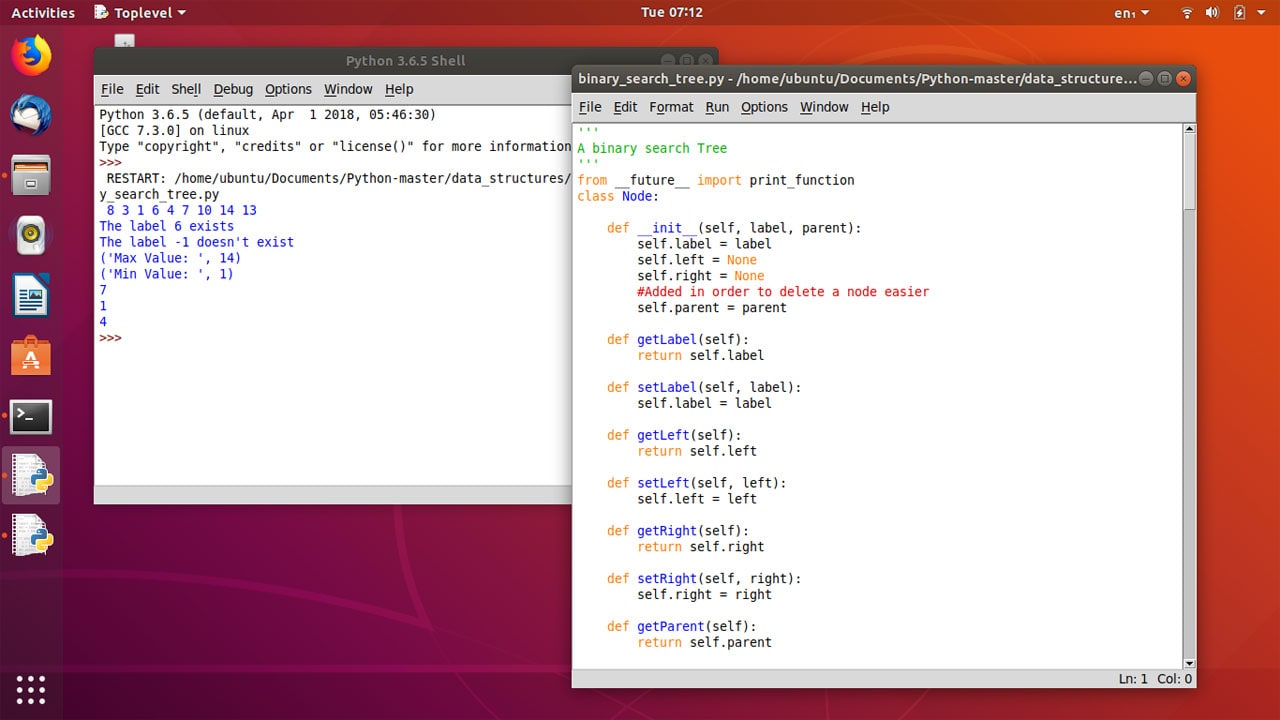
2. PyCharm¶
- The popular Python IDE PyCharm was developed by JetBrains.
- Large Python projects may be developed more easily with the help of this IDE, which is appropriate for expert developers.
- Cost: Freemium (It is a community version)
- Professional Version - You get plethora of features with paid version.
The most noteworthy attributes of PyCharm are as follows:
- JavaScript, CSS, and TypeScript support.
- Intelligent code navigation.
- Code restructuring that is quick and secure.
- Support features like IDE-based direct database access.
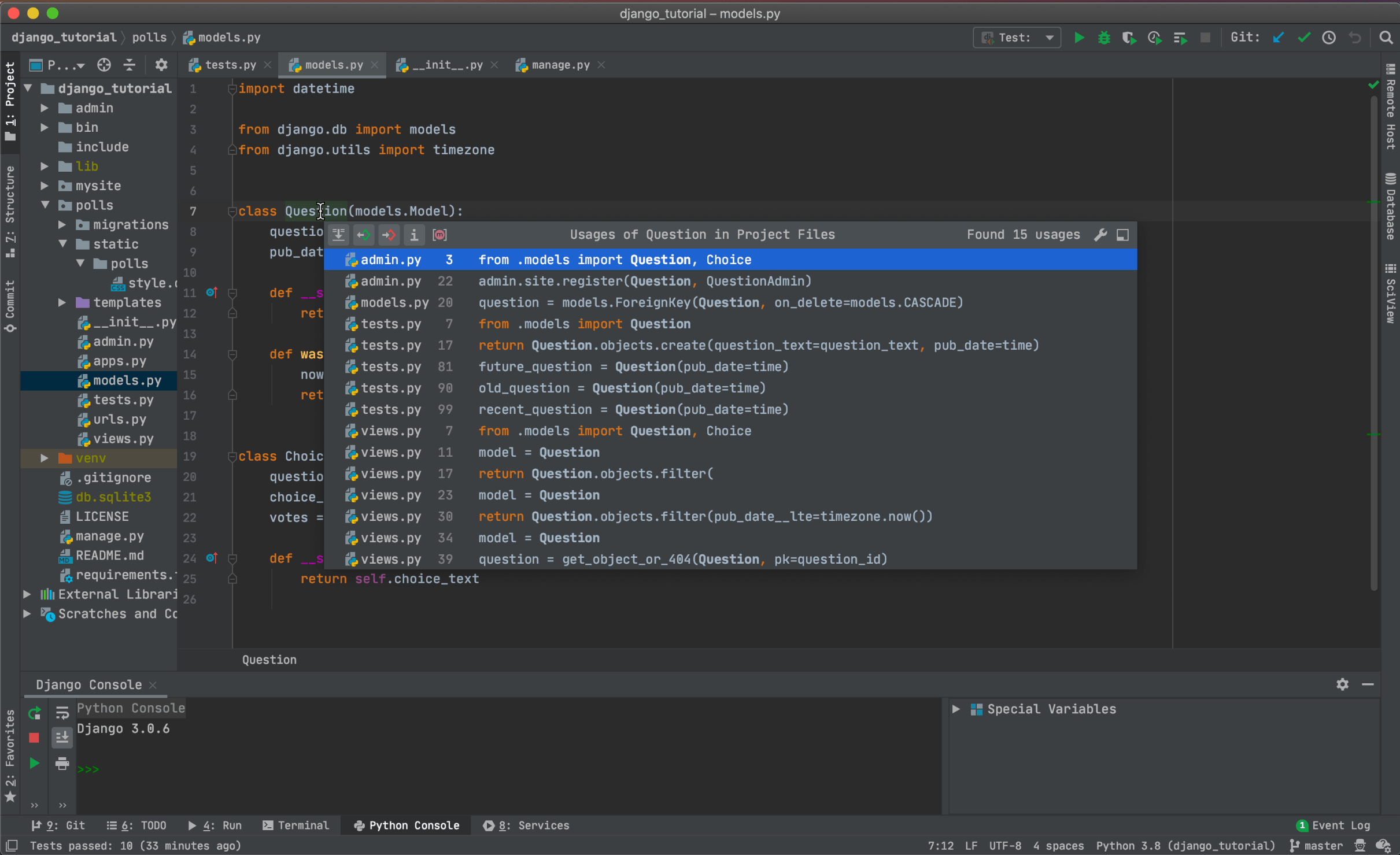
3. Visual Studio Code (VS Code)¶
- Microsoft developed the open-source (and free) IDE known as Visual Studio Code. It is really beneficial for Python development.
- Only a few of the commercial IDEs offer powerful capabilities as powerful as those in VS Code.
- Cost: Free
The key characteristics of Visual Studio Code are as follows:
- Based on a number of variables, one of the greatest smart code completion systems.
- Integration of Git
- Bug-fixing in the editor's code
- It gives the option of adding an extension to provide other features like code linting, themes, and other services.

4. Sublime Text 3¶
- The coding editor Sublime Text is particularly well-liked.
- Python is one of the many languages it supports, and it has a lot of customization options in addition to quick development times and dependability.
- Cost: Free
The following are some of the Sublime Text 3's standout features:
- Custom user commands for utilizing the IDE with syntax highlighting.
- Effective administration of the project directory.
- It provides more Python programming packages for the web and science.
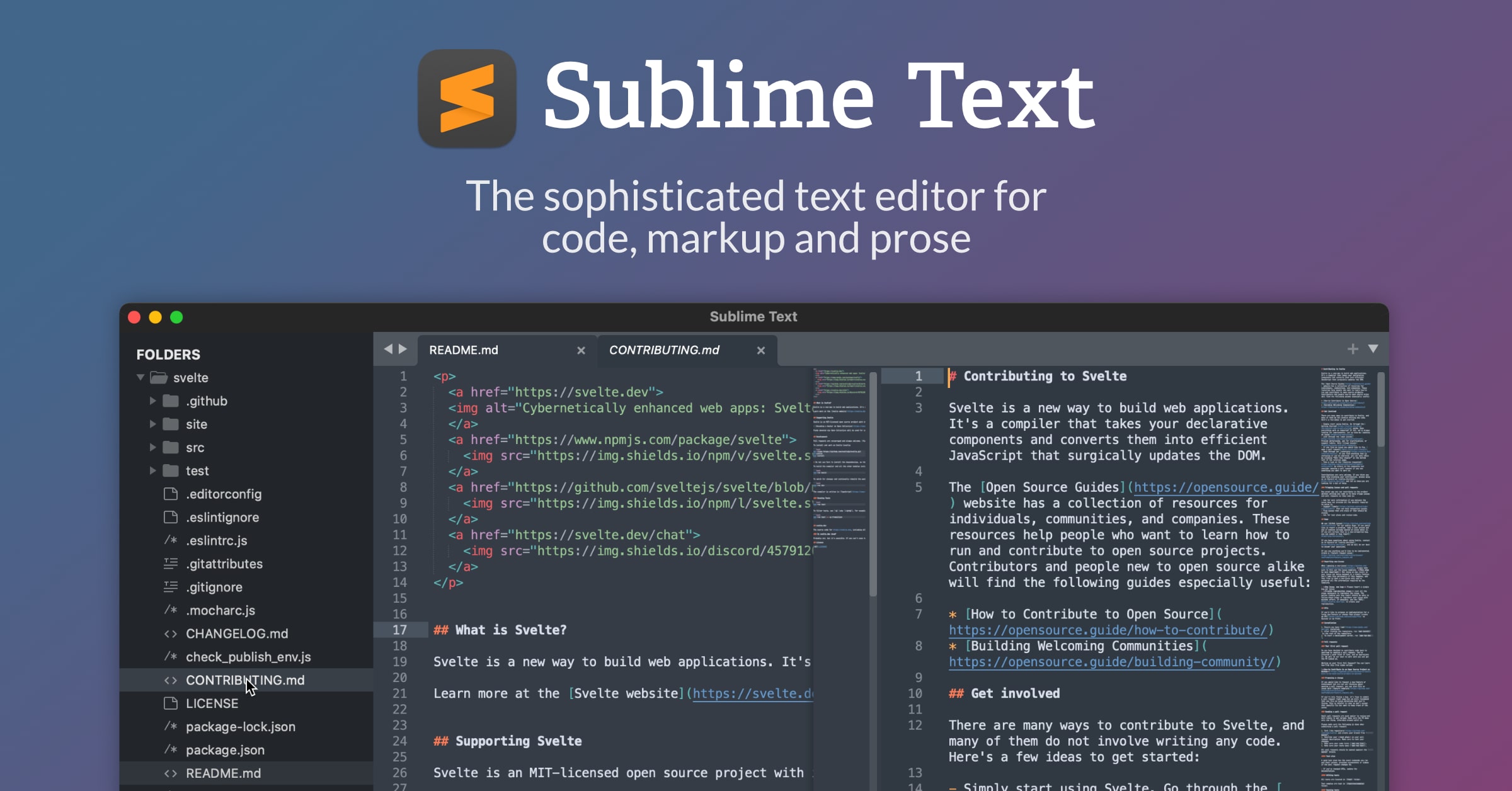
5. Atom¶
- Python programming is supported by Github's open-source Atom code editor.
- Atom offers almost identical features to Sublime Text and places a strong emphasis on speed and usability.
- Cost: Free
The salient characteristics of Atom include:
- Support for many different plugins.
- Smart autocompletion allows users to interact with the editor using their own unique commands.
- Cross-platform development assistance.

6. Jupyter Notebook¶
- The area of data science makes extensive use of Jupyter Notebook.
- It is simple to use, interactive, and enables for real-time viewing and code exchange.
- Cost: Free
The salient characteristics of Jupyter include:
- Supports for the computational process for numbers and machine learning.
- Combining text, code, and graphics will improve user experience.
- Data science libraries from different generations, such as NumPy, Pandas, and Matplotlib.
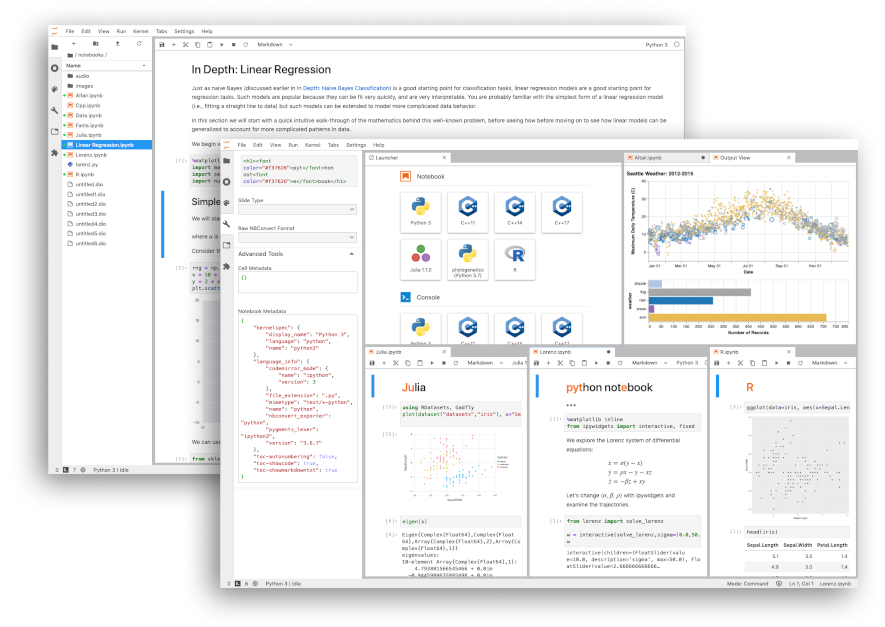
7. Spyder¶
- The most popular application development environment (IDE) for science is called Spyder.
- Spyder includes the well-liked Anaconda distribution for data science and machine learning.
- Cost: Free
The salient characteristics of Spyder include:
- Assistance with automated code splitting and completion.
- Supports the manipulation of data and the creation of many sorts of charts.
- Integration of NumPy, Pandas, and Matplotlib data science libraries.

8. PyDev¶
- As a third-party plugin for the Eclipse IDE, PyDev is a powerful Python interpreter.
- It is one of the developers' favorite open-source IDEs because of its flexibility.
- Cost: Free
The key characteristics of PyDev are as follows:
- Code coverage, auto-completion, and Django integration.
- Supports code analysis, debugging, type hinting, and refactoring.
- Dependable assistance for Python web development.

9. Thonny¶
- An excellent IDE for teaching and learning Python programming is Thonny.
- Cost: Free
The salient characteristics of Thonny are as follows:
- Basic debugger
- Function assessment
- Automatic detection of syntactic mistakes
- View of variables in a Python project or program in detail

10. Wing¶
- Another well-liked IDE that offers a lot of beneficial features to guarantee a productive atmosphere is called The Wing.
- Wing provides developers with a 30-day trial edition so they may examine and become familiar with this IDE's capabilities.
- Price range for a business licence is US\$95 to US\$179.
The salient characteristics of Wing include:
- Your Python code receives quick input from it.
- Through the use of Pytest, unit tests, and the Django testing framework, it supports test-driven development.
- It facilitates distant development.
- There is auto code completion.
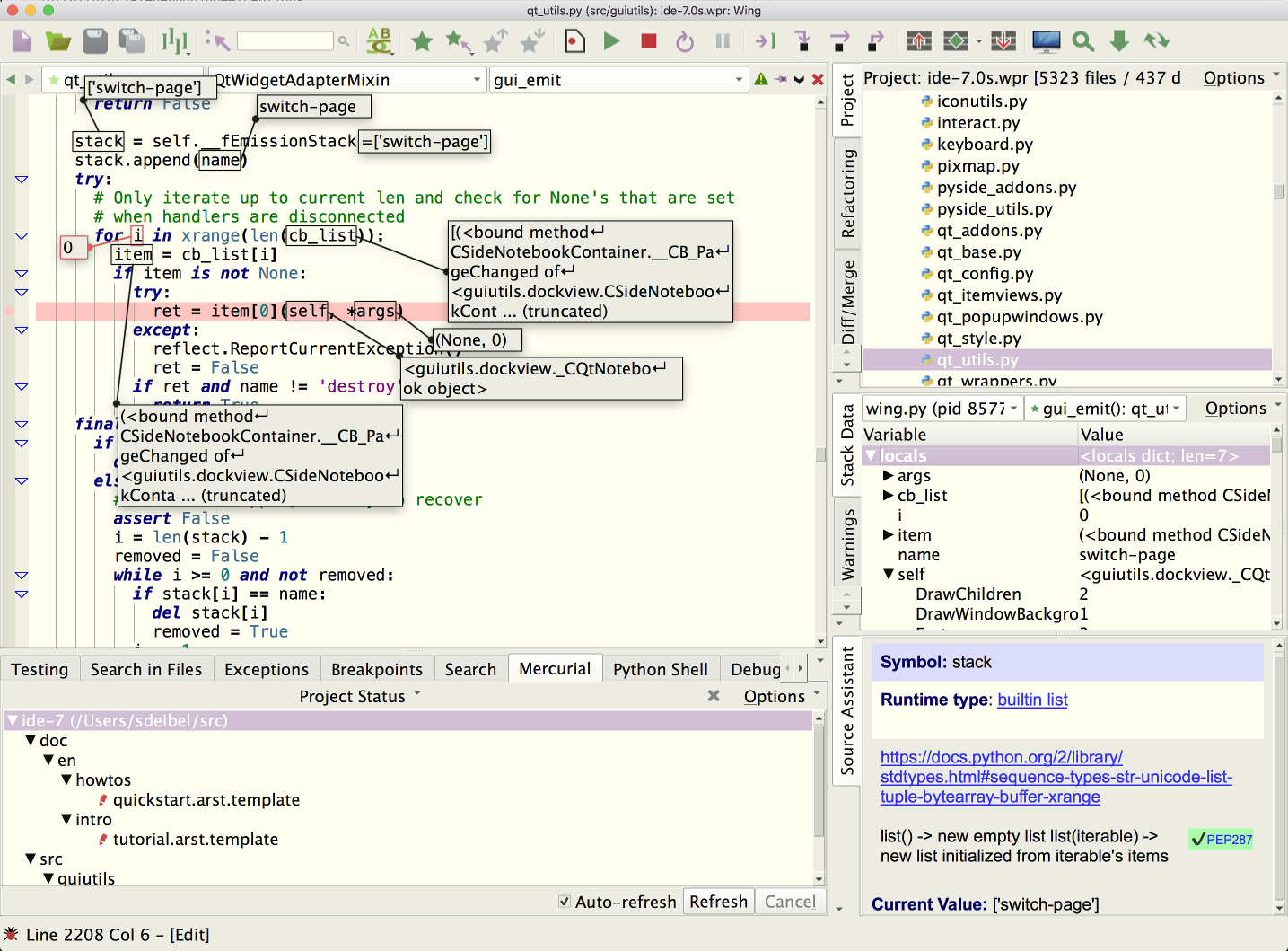
Other Python IDE That You Can Use ¶
Conclusion¶
CoderzColumn is here to help you enhace your knowldege and expertise. Stay tuned to get more updates on python and related programming languages.
 Dolly Solanki
Dolly Solanki
![]() Want to Share Your Views? Have Any Suggestions?
Want to Share Your Views? Have Any Suggestions?
If you want to
- provide some suggestions on topic
- share your views
- include some details in tutorial
- suggest some new topics on which we should create tutorials/blogs



 Want to Share Your Views? Have Any Suggestions?
Want to Share Your Views? Have Any Suggestions? python-IDEs
python-IDEs
